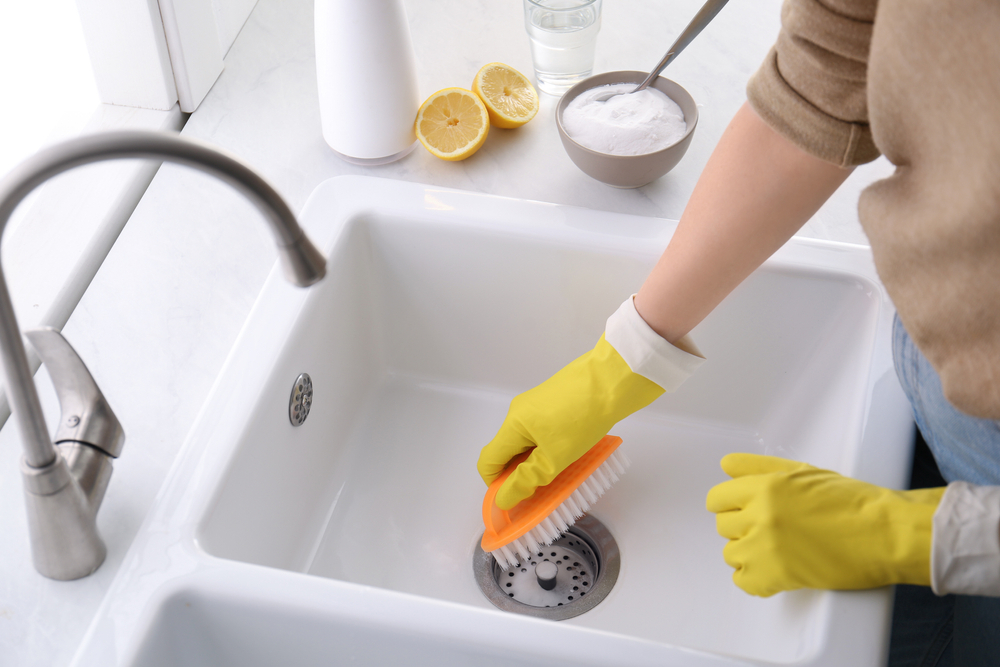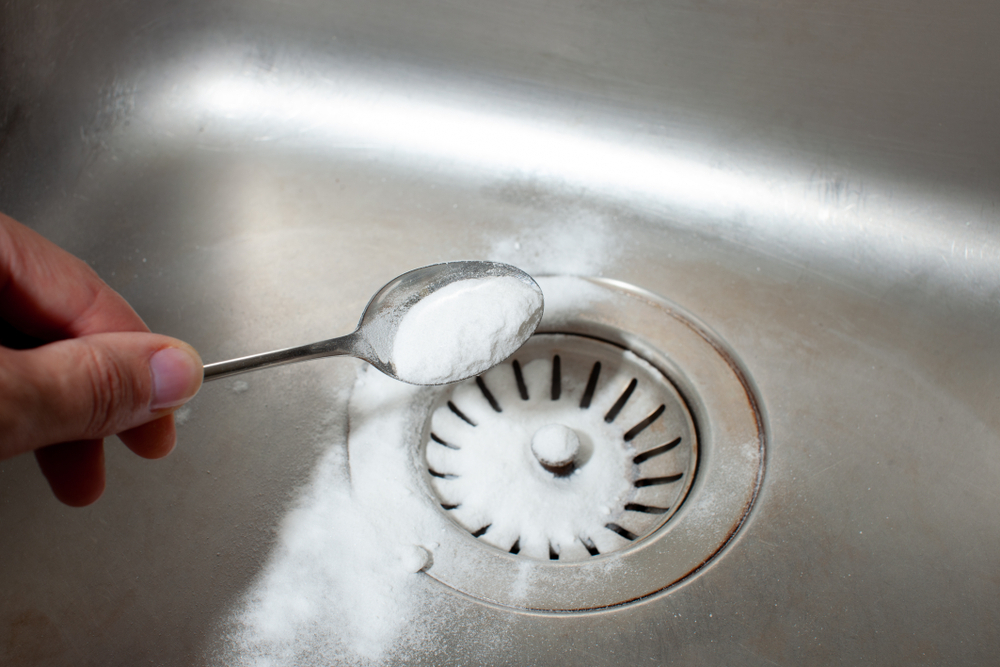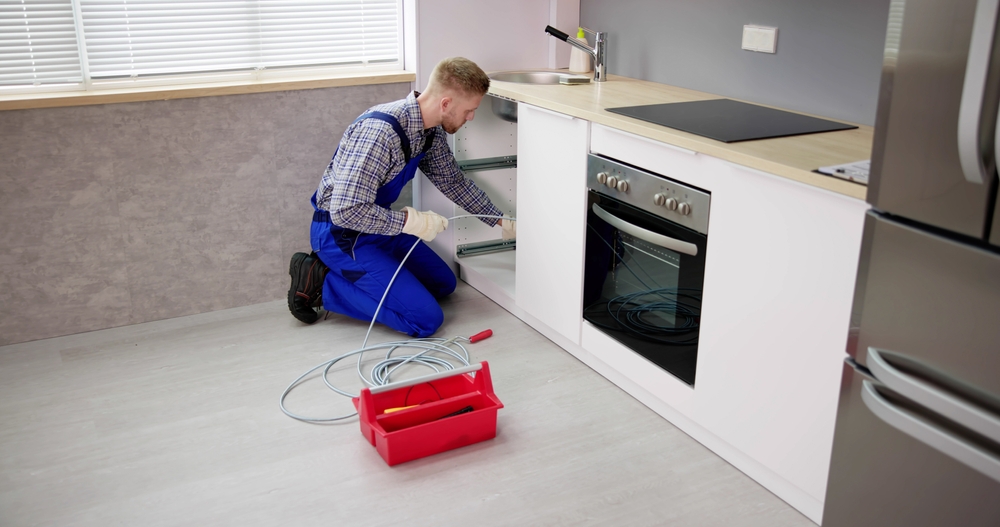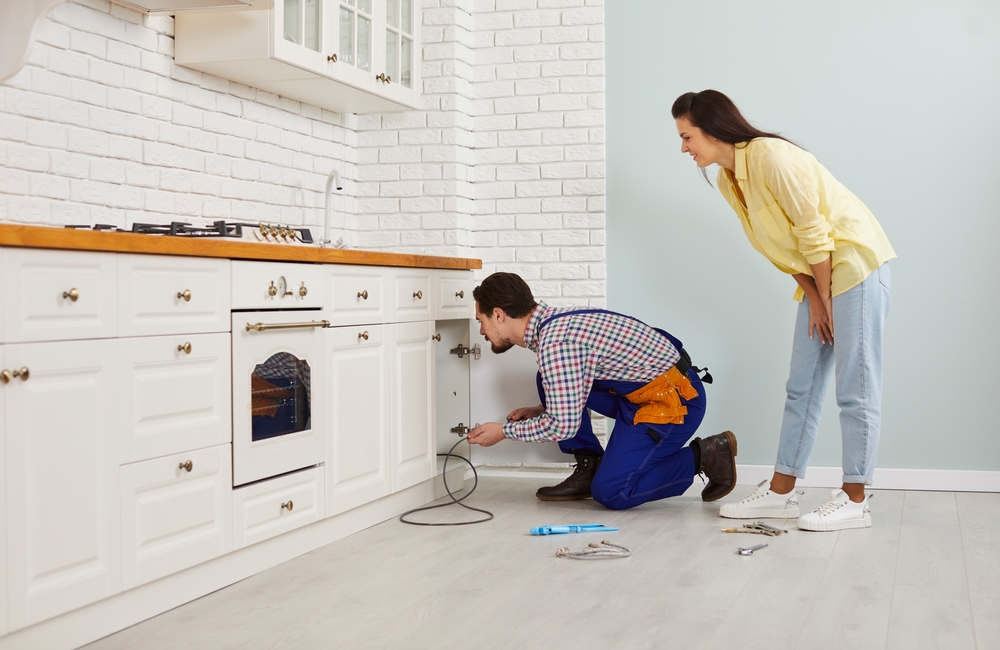For unclogging blocked pipes, drain cleaners have long been a first choice. Many homes utilize them without much thought; they are a simple cure. Still, there is more to these strong cleansers than first greets the eye. Although they look like a basic, uncomplicated fix, their efficacy depends on a complicated interaction of chemical components. Many people think drain cleaners offer only a temporary solution, but knowing their mechanisms helps one to realize their actual possibilities.
Components of Drain Cleaners
There are several types of drain cleaners, each meant for particular obstructions. These cover liquid, gel, and powder varieties. Though they have different uses and characteristics, each variety uses common elements.
Main Ingredients
Most drain cleaners consist mostly in sulfuric acid and sodium hydroxide (lye). Strong reactivity of these compounds with organic molecules makes them ideal candidates for principal offenders causing drain blockages.
Sodium Hydroxide: One strong alkali is sodium hydroxide, sometimes referred to as lye. By turning organic stuff like grease, food bits, and hair into soap-like compounds, it breaks them down. This very efficient procedure for removing obstructions is called saponification.
Sulfuric Acid: One other strong element utilized in drain cleaners is sulfuric acid. Nearly any organic substance it comes across will be broken down by this extremely corrosive agent. Strong oxidizing qualities make it very useful against tougher blockages that sodium hydroxide might not completely dissolve.

How Ingredients Work Together
These substances interact with the organic components in blockages to break them down into smaller molecules. Usually producing heat, this reaction encourages the blockage to loosen even more. These elements taken together guarantees that the clog is broken down and drained away, therefore cleaning the drain.
Choosing the Right Drain Cleaner
To really clear clogs, one must choose the right kind of drain cleaner. For small clogs brought on by oil or soap accumulation, for example, liquid drain cleaners are usually ideal. Targeting soft blocks, they pass readily through the pipes. For tougher blockages, such hair or food particles, gel cleaners—which are thinner and can adhere to the pipe’s sides—are more effective. Because they can handle a larger spectrum of materials, powder drain cleaners are frequently the most powerful, perfect for severe clogs.
Not only may the incorrect sort of drain cleaner be useless, but it might also damage your plumbing system. Using a highly corrosive cleaner on a clog that may be cleared with a gentler solution, for example, could compromise your pipes.
The Chemical Reactions Driving Clog Breakdown
Knowing the chemical reactions involved in drain cleaners helps one to better appreciate their efficiency.
The Process of Reaction
When sodium hydroxide or sulfuric acid comes into touch with a blockage, a chemical reaction results. For instance, saponification results from sodium hydroxide’s reaction with grease. This process turns the grease into easily wiped away soap-like material. Sulfuric acid similarly oxidizes organic stuff, breaking it down into smaller, more doable bits.
Exothermic reactions—that is, those which release heat—are these ones. This heat softens the blockage more, therefore facilitating the continuous chemical reaction. These reactions create pressure that is also rather important since it drives the broken-down substance through the pipes.
The Role of Heat and Pressure
One result of the chemical interactions between blockages and drain cleaners is heat. Because it softens the clog, increasing its pliability and simplicity of breaking down, this heat is helpful. The pressure generated by the expanding gasses during the reaction also helps to dislocate the blockage, therefore pushing it down the drain.
But given the great heat and pressure drain cleaners create, one should exercise great caution when utilizing them. Particularly in old pipes or those constructed from materials not resistant to high temperatures, these reactions can compromise pipelines.
Potential Dangers and Safety Precautions
Though powerful, the strong chemicals in drain cleaners can be dangerous if applied improperly. Both sulfuric acid and sodium hydroxide are quite corrosive and, should they come into touch with flesh, can cause severe burns. Additionally causing respiratory problems is breathing in vapors from these compounds.
Using drain cleaners near me calls for following safety precautions. Always check the area for ventilation and wear eye protection and gloves. Mixing several kinds of drain cleaners should never be done since this could cause harmful chemical reactions. Combining a cleaner with bleach, for example, with one with acid might generate harmful chlorine gas for which health is threatened.

The Importance of Contact Time and Temperature
Effective performance of a drain cleaner depends on time to interact with the obstruction. The chemicals won’t be able to function correctly if you just toss the cleaner down the drain and flush it right away with water.
The Need for Contact Time
Enough time allows drain cleaners to break down the obstruction. The type of cleaner used and the degree of the obstruction will determine the time needed. For lighter clogs, 15 to 30 minutes might be plenty. More tenacious obstacles, however, could call for the cleaner to spend many hours or even overnight in the drain.
Avoiding too much cleaner is also crucial since one believes it will hasten the procedure. Excessive heat and pressure resulting from overuse can compromise pipelines. For the advised dosage and contact time, instead follow manufacturer directions.
The Role of Temperature
The efficiency of drain cleaners can be much influenced by temperature. Warm water speeds up the activation of the cleaner’s components, therefore improving their capacity to dissolve the blockage. For cleaners using sodium hydroxide especially, heat speeds up the saponification process.
But using boiling water with chemical drain cleaners—especially those using sulfuric acid—is absolutely not advised. A strong reaction brought on by boiling water might result in splashing and possible harm. To enable the cleaner operate more efficiently, instead use warm, but not boiling water.
Other Factors That Affect the Effectiveness of Drain Cleaners
Although contact duration and chemical composition are quite important, other elements also affect the effectiveness of a drain cleaner.
Amount of Drain Cleaner Used
Your usage of cleaner should be commensurate with the size and degree of the obstruction. Too little could not completely clear the blockage, leaving residue that might block the drain once more. On the other side, overuse might produce too much heat and pressure, therefore causing possible pipe damage.
Composition of the Clog
The efficiency of the drain cleaner depends on the kind of substance generating the clog as well. Chemical cleaners find it simpler to break down organic products including food particles and hair. Chemical cleansers won’t work, though, jams brought on by non-organic items like plastic or metal debris. Mechanical solutions such as drain snakes or plungers are therefore more successful in such situations.
Additionally needing more time and a stronger treatment are heavy, grease-laden obstructions. Because it can harden and stick to pipe surfaces, grease is especially difficult. Usually more successful against grease is a drain cleaner including sodium hydroxide since it breaks down the fat into soap and glycerol that can be flushed away.
Pipe Material
Furthermore affecting the efficacy and safety of drain cleaners is the kind of pipes your plumbing system uses. Older pipes—that composed of materials like PVC—may not be able to resist the heat and pressure produced by vigorous chemical reactions. Under such circumstances, a milder drain cleaner or another approach could be safer choices.
Alternative Methods for Unclogging Drains
Although they work well, drain cleaners are not always the best fix. Just equally effective, some other approaches can be safer, more ecologically friendly, and less expensive.
Mechanical Methods
A long, flexible tool used to break up and remove obstructions from a drain is a drain snake, sometimes known as plumber’s snake. For clogs brought on by hair or other solid objects, it is especially successful. Drain snakes fit several kinds of clogs since they vary in length and width.
Plungers: For little clogs, a plunger is a straightforward but efficient instrument. A plunger can remove obstructions by generating a vacuum, therefore enabling their flushing away. To get best results, make sure the plunger makes a tight seal over the drain and move forcefully, consistently.

Preventive Maintenance
Preventing clogs from developing initially depends mostly on regular maintenance. Before they gather, simple habits like running boiling water down the drain once a week help break down grease and soap scum. Furthermore preventing hair and big debris from getting into the pipes is installing drain screens.
Using enzymatic drain cleansers is still another protective action. Natural enzymes included in these cleaners gently break down organic matter over time, therefore lowering the possibility of clogs developing. For your pipes and the environment, they are safer even if their operating speed is slower than that of chemical cleaners.
Environmentally Friendly Solutions
Apart from enzymatic cleansers, vinegar and baking soda are other green solutions. This mix produces a moderate, bubbly reaction that might assist small blockages be broken down. Although not as strong as professional drain cleaners, this approach is safe for all kinds of pipes and does not endanger the surroundings.
Conclusion
Maintaining clear pipes depends mostly on drain cleaners, but their efficiency relies on their working mechanism. From the chemical interactions breaking down blockages to the significance of contact duration and temperature, every element helps them to be successful. Still, it’s important to utilize these strong instruments carefully and, when suitable, take alternative action.
Recall that even while drain cleaners are quite efficient, they are not always the ideal fix for every problem. Your plumbing system won’t be damaged if you keep your drains clear with regular maintenance, appropriate tools, and careful approach. Understanding the magic in drain cleaners will help you to make wise decisions.
Plumbing Services CA
https://maps.app.goo.gl/31Yt4rhDrainzNJ4A
(279) 203-0765
https://plumbingservicesca.com/


